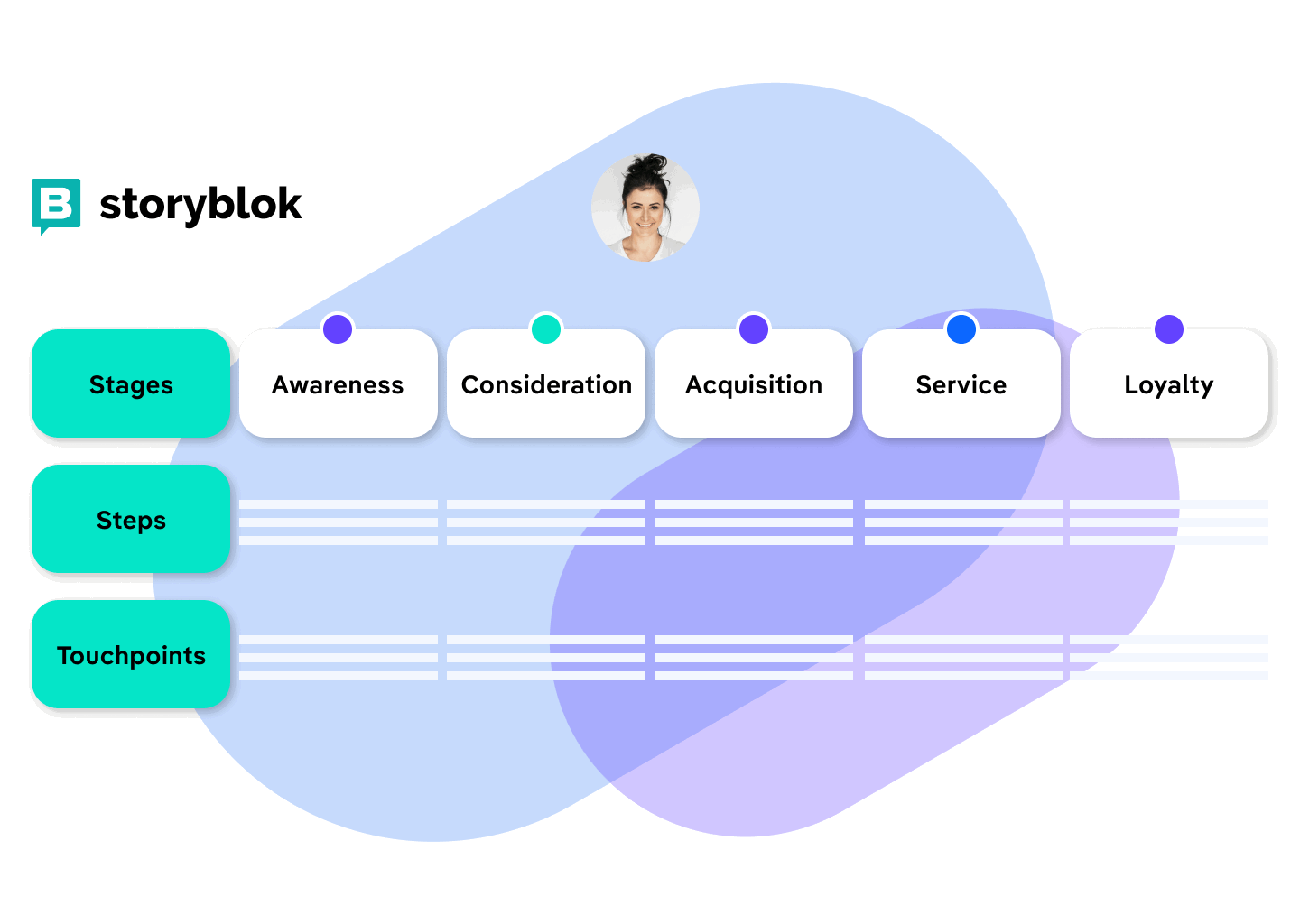
Implementing a Customer Journey Mapping Strategy with Storyblok's DXP Capabilities
This year, it is more important than ever to create a seamless customer experience to increase customer satisfaction, loyalty, and revenue.
One of the most effective ways to achieve this is by creating a visual representation of a customer's journey through your website and other touch points. A customer journey map will help you understand the customer's experience, identify areas for improvement, and implement changes to create a better user experience.
This blog post will discuss how to implement a customer journey mapping strategy using Storyblok's DXP capabilities.
Leveraging Storyblok's DXP Capabilities for Customer Journey Mapping
Storyblok's DXP capabilities create a seamless customer experience through personalized content tailored to each customer's needs. This means you can use Storyblok to create content that is specific to each stage of the customer journey.
For instance, you can create landing pages designed to convert visitors into leads, and product pages that highlight your product and service benefits.
Creating a Customer Journey Map with Storyblok
To create a customer journey map with Storyblok, you need to follow a few simple steps. First, you need to identify the different stages (awareness, consideration, and decision) of the customer journey.
Create content that is tailored to each stage of the journey
Customer Journey Stages
- Awareness - Customers discover brands through channels such as social media, search engines, reviews, blogs, and ads. The aim is to increase your Share of Voice (SoV) by focusing on reaching people with your message and making it easily accessible. The key performance indicator (KPI) at this stage is awareness, which means being at the forefront of your customer's minds and increasing the likelihood of sales. The first step in building awareness is usually a search on Google or social media.
- Consideration - When a customer visits your website, they engage with your content and compare your product to others. You can increase brand awareness by improving your storytelling, positive reviews, and ads. A strong first impression can be achieved by improving website performance and User Experience design. The ultimate goal is to increase commercial intent and attract customers to your brand.
- Decision - Similar to the Consideration Stage, focus on signals from customers with commercial intent. These signals come from customers who have completed the customer journey and are ready to purchase. The primary goal in this stage is financial, which can be either top-line revenue growth or bottom-line profit.
Next, you need to create content that is tailored to each stage of the journey. This includes landing pages and product pages. You can use Storyblok to create these pages and campaigns quickly and easily.
Finally, you need to track the customer's journey through your website and other touchpoints. This includes tracking the customer's behavior, preferences, and interactions with your content. You can use Storyblok's analytics to track this information and make improvements to your customer journey map over time.
Using Storyblok's DXP capabilities to implement a customer journey mapping strategy can create a seamless customer experience. You can personalise content to each customer's needs, identify areas for improvement, and enhance the user experience.



